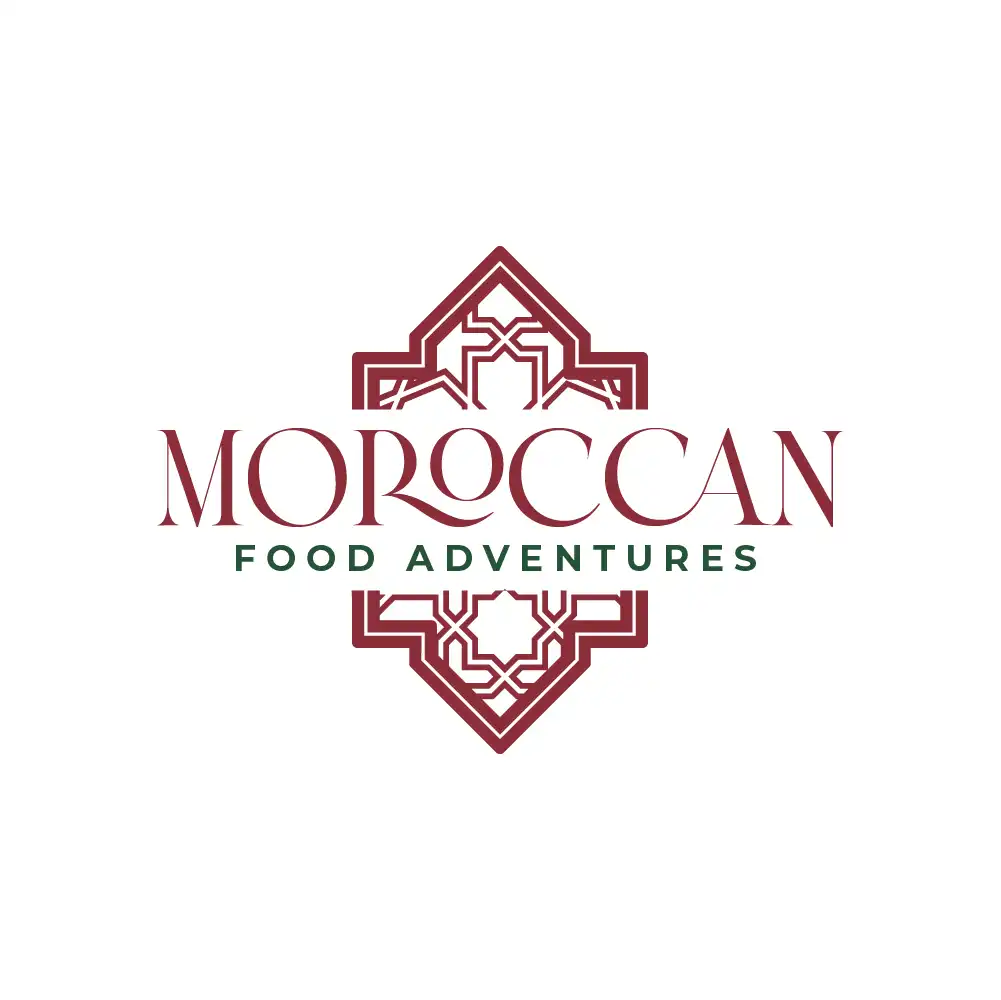Let’s dive into the world of Moroccan street food, where the streets come alive with the sizzle of grills, aromatic spices, and vendors calling out to hungry passersby. This post explores Moroccan street food, its cultural significance, and its appeal to both locals and visitors.
This has a special place in my heart because my husband and I run a food tour business in Marrakech and Essaouira. It has always been something we have wanted to share with people who feel intimidated by navigating Morocco’s street food scene. So, that’s how the idea for Moroccan Food Adventures was born!
If you want to explore street food when you’re visiting this post should help you get started.
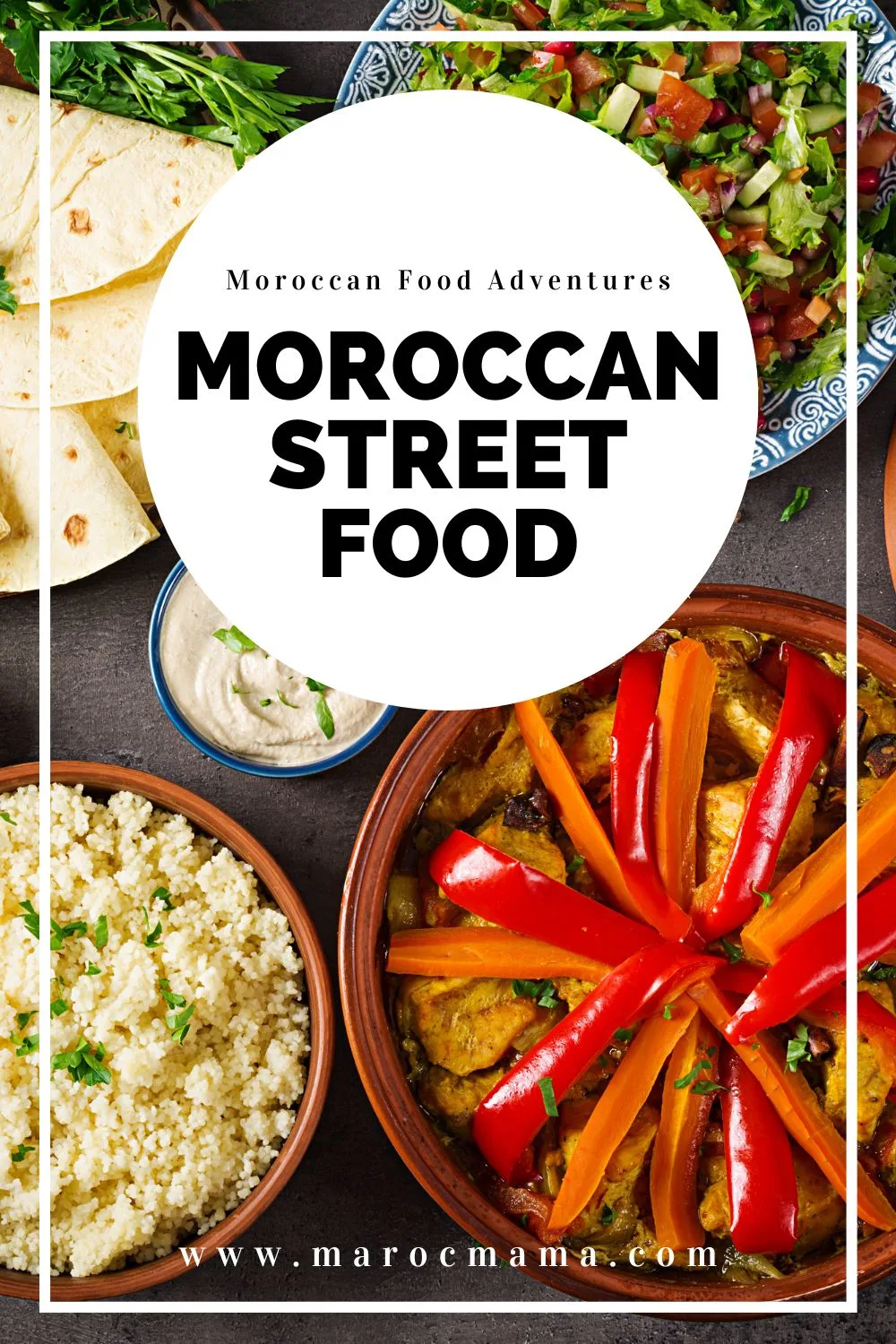
Moroccan street food is more than just a quick snack; it’s an essential part of the country’s food culture. The stalls and food carts along the streets serve as hubs of community and flavor. They attract a diverse crowd of Moroccans and tourists, all enticed by the delicious offerings.
Street food is diverse, with different regions offering their unique dishes. From grilled meats to sweet pastries, it mirrors the country’s culinary variety. In this post, we’ll take a closer look at the flavorful world of Moroccan street food and discover its cultural richness, one bite at a time.
Some Common Moroccan Street Foods
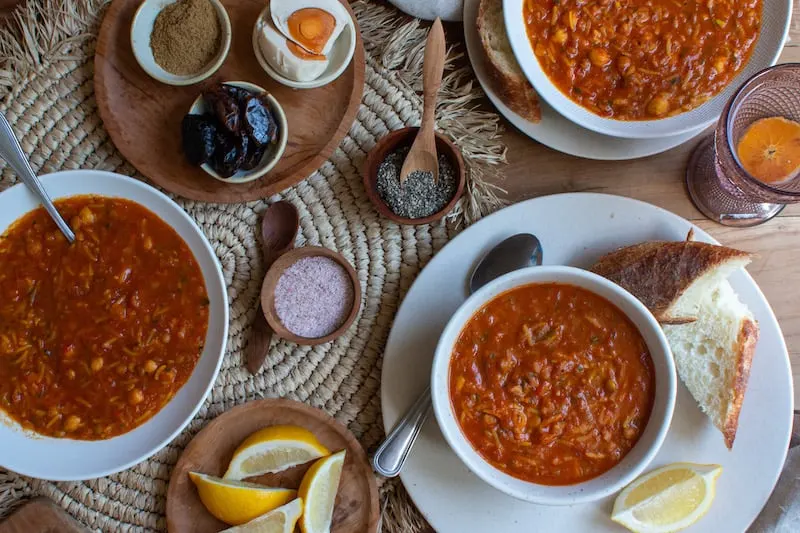
Harira: A hearty soup made with tomatoes, lentils, chickpeas, and various spices. It’s often enjoyed during Ramadan to break the fast. But you’ll also find street sellers serving up bowls of harira throughout the year. It can have meat in it so you’ll want to double check if you’re looking for a vegetarian option.
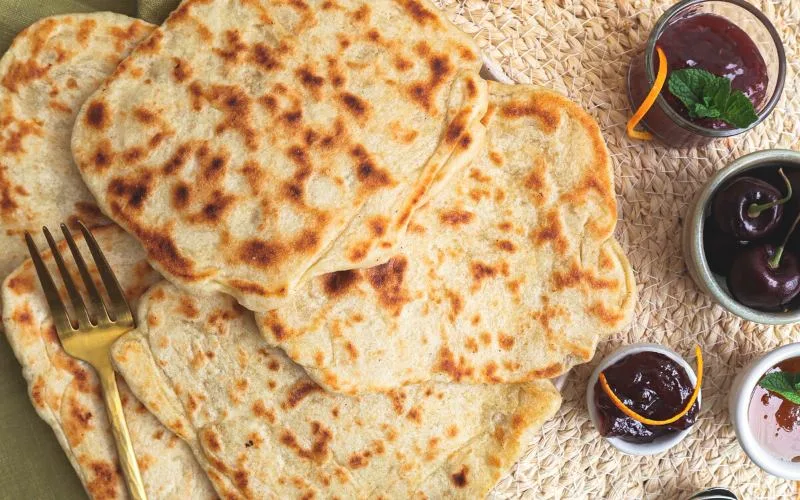
Msemmen: A square-shaped, flaky pancake that’s pan-fried and typically served with honey or jam. These are very typically sold during breakfast time and in the later evenings for snacks. They can be savory or sweet.
Rghaif: Similar to msemmen, rghaif is a type of Moroccan flatbread. This term can be used int different parts of the country for msemmen. These can also be savory, stuffed with spices and onions.
Melawi: Another bread very similar to msemmen but in a round shape. They’re flaky and served with honey and butter. You might also find people eating them with cheese.
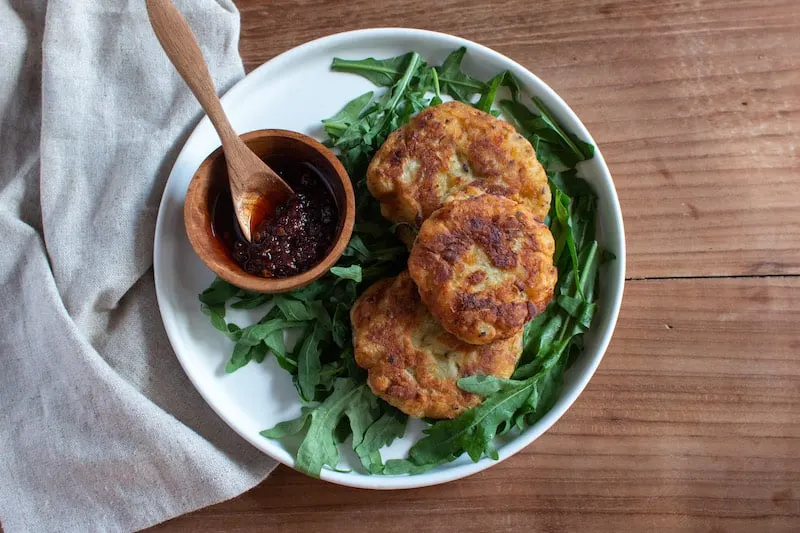
Maakouda: Deep-fried potato patties or croquettes, often served in a sandwich or as a snack. You won’t find maakouda everywhere, though they’re very common in cities like Essaouira. Often they’re made at home. I highly suggest if you do find them sold on the street to give them a try!
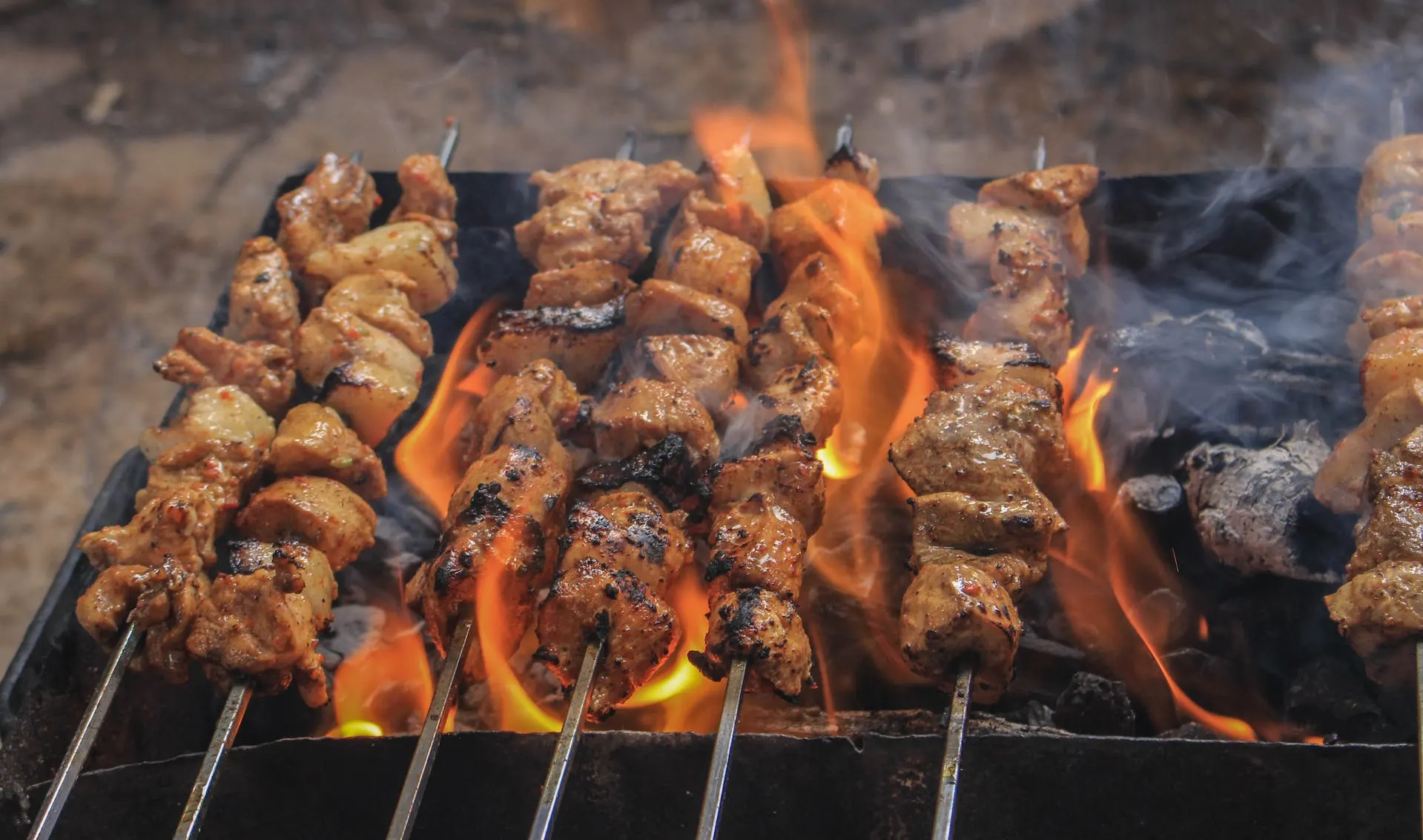
Brochettes: Skewers of grilled meat (beef, chicken, or lamb) seasoned with spices like cumin, paprika, and garlic.
Another variation of brochettes is called boulfaf. It’s grilled liver served with cumin and salt.
Beef Kefta: Ground meat skewers seasoned with spices and herbs, then grilled to perfection.
Moroccan Sausages (Merguez): Spicy sausages made from beef or lamb, grilled and served in a sandwich.
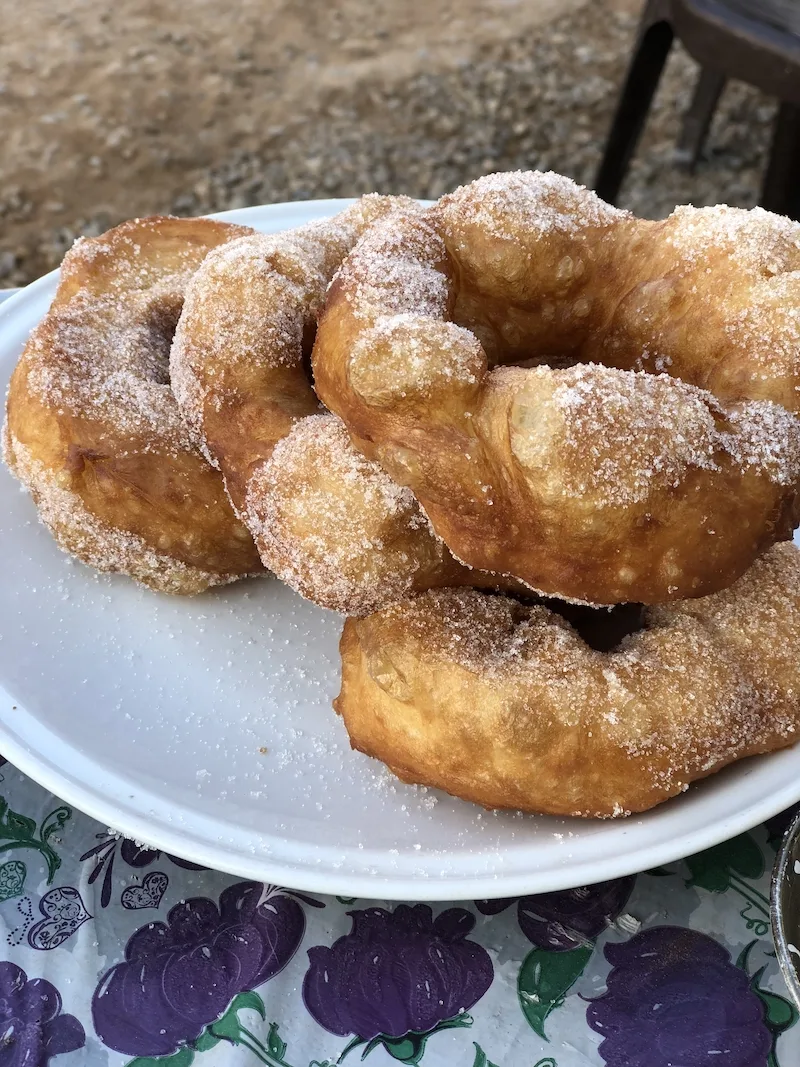
Sfenj: Moroccan-style doughnuts, deep-fried and dusted with powdered sugar.
Grilled Corn (Blébi): Corn on the cob grilled and seasoned with spices.
Moroccan Meat Omelette (Khliaa): A flavorful omelet made with eggs, preserved meat, and spices. Khliaa is typically dried lamb preserved in clarified fat. It’s a traditional way of preserving meat and used in a few ways. These omelets are really popular at breakfast time.
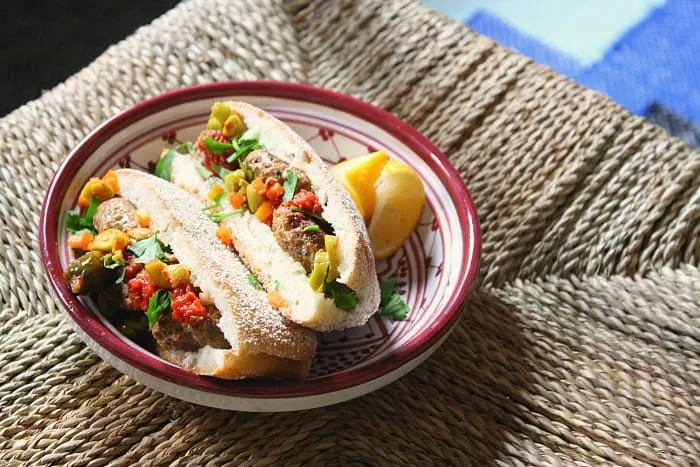
Sardine Sandwiches (Hout Quari): Grilled or fried sardines served in a sandwich with bread and various toppings like tomatoes and olives.
Chermoula Grilled Fish: Fresh fish marinated in chermoula sauce (a mixture of herbs, spices, and lemon juice) and grilled.
Snail Soup: A unique street food experience in Morocco, especially in the evenings, where you can try snail soup seasoned with herbs and spices.
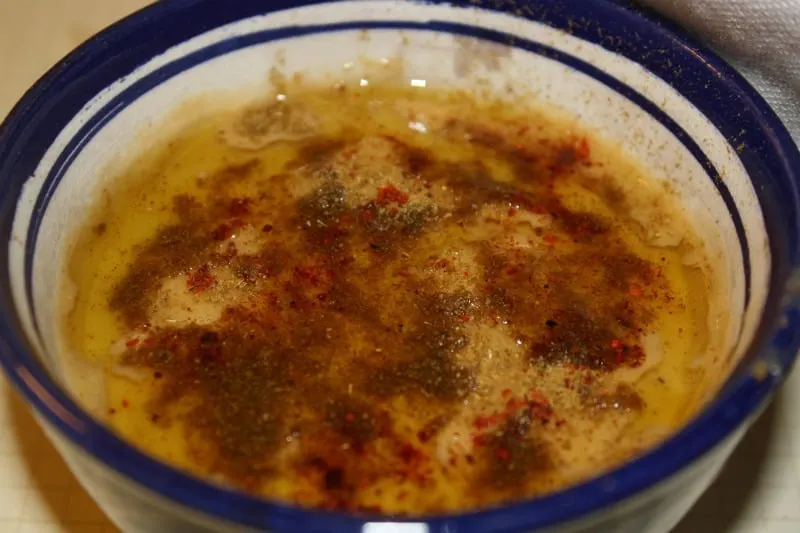
Bssara: Moroccan bssara soup is a hearty and flavorful dish made from dried fava beans, aromatic spices, and olive oil, often garnished with cumin and olive oil.
Finding the Best Moroccan Street Food
When it comes to exploring Moroccan street food, authenticity is the key to an unforgettable culinary adventure. To ensure you savor the genuine flavors of Morocco, start by honing your skills in identifying the right street food vendors. Seek out those bustling stalls that are frequented by locals, a telltale sign that you’re in for an authentic treat. The wisdom of the crowds often leads to the most delicious discoveries.
One excellent strategy to uncover the hidden gems of Moroccan street cuisine is to tap into the knowledge of locals. Strike up a conversation with friendly Moroccans and ask for their cherished street food recommendations. Their insights can lead you to tucked-away stalls and family-run businesses that may not be in the guidebooks but offer some of the most mouthwatering dishes you’ll encounter. (If you’re in Marrakech or Essaouira, join one of our food tours and have all this work done for you!)
Food tours in Marrakech and Essaouira with food day adventures nearby!
Cleanliness and Hygiene When Eating Street Food
As you embark on your street food adventure, hygiene and cleanliness should remain a top priority. While the essence of street food lies in its rustic charm, it’s crucial to choose vendors who maintain clean cooking practices and use fresh ingredients.
Before placing your order, take a moment to observe the cleanliness of utensils and the food preparation area. Opt for stalls where the cooks prioritize hygiene, ensuring that every flavorful bite you take is as safe as it is delicious. By following these tips and seeking out street food vendors favored by locals, you’re bound to experience the true essence of Moroccan culinary traditions.

What to Watch Out For
When indulging in the delightful world of Moroccan street food, it’s essential to keep a few practical tips in mind to ensure both a delicious and safe culinary adventure. Firstly, pay attention to food hygiene and cleanliness. While many street vendors uphold high standards, it’s wise to observe the overall cleanliness of the food preparation area and the utensils they use. Look for stalls where the vendors follow good hygiene practices, and fresh ingredients are used.
Water quality and the use of ice can be a concern in some places, so it’s generally safest to opt for bottled beverages rather than those made with tap water or ice. Generally hot drinks are safer than cold drinks so sip all the tea you can!
If you have specific dietary preferences or allergies, communicating these to street food vendors can be crucial. While language barriers might exist, having a few key phrases in Moroccan Arabic can be immensely helpful. Phrases like “Ana vegetarian” (I am vegetarian) or using hte word “hassasiya” to convey you have an allergy to something (the word means allergy) is important.
That being said if you truly are not sure, it’s better to avoid it than to risk illness if there’s miscommunication. My best advice is to look for things that do not have your allergen in them at all instead of asking for something to be removed. It’s much easier to ensure a mix-up doesn’t happen.
Exploring Moroccan street food is an adventure for the senses, offering a rich tapestry of flavors and aromas that truly capture the essence of Moroccan culture. By observing food hygiene, being cautious about water and ice, and effectively communicating dietary preferences or allergies to street food vendors, you can enjoy Moroccan flavors with confidence. Embrace the bustling street stalls, ask the locals for their favorite spots, and savor each bite of this delectable journey through Morocco’s vibrant street food scene.
More Moroccan Food Tips for Your Trip
Moroccan Food That Kids Will Love
